StoneWind Center for Traditional Reiki
The Healing Benefits of Reiki include:
Pre-surgical support and rapid post-surgical healing, Improved quality of sleep, Diminished side effects of chemo and radiation, Help in rebuilding and maintaining immune system response, Powerful healing for others and from others at a distance, Ease of self-treatment with distance techniques, Decrease in anxiety, overall tension, and muscle stress, Assistance with depression, loneliness, and sadness, Help in dealing with emotional trauma and anxiety attacks, Healing for our Animal Friends, Emotional support for grieving family and friends, Effective assistance with end-of-life palliative care.
Reduction of pain and discomfort,
Accelerated wound healing,
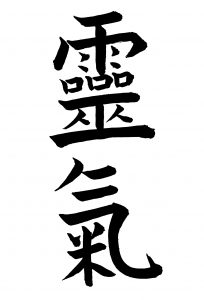
Traditional Reiki (ray-key), one of the main healing modalities offered at StoneWind Institute, is an easy to learn, simple to use healing method that anyone can learn with a weekend of training, then use on oneself and to help others, including the ill, children, and the elderly. Reiki is now practiced by millions of people world wide and is used and/or recommended in as many as 800 hospitals in the US, including the The Mayo Clinic, MD Anderson Cancer Center, and Memorial Sloane Kettering Cancer Center.
Traditional Reiki is not a religion. It has no arcane dogma, no religious tenets. It requires no rigorous ascetic practices or rituals. To have and use Reiki a person needs to do nothing more than be attuned by a properly trained Master and have the intent for Reiki to flow whenever they put their hands on themselves, family members, people in need, or their pets. Sounds too simple, too easy? It is that simple and that easy—and everyone can begin to do it with a weekend of training. To understand more, see “Going Deeper” below. To sign up for a class, see the “Structures and Policies” below.
Reiki Training at StoneWind
Traditional Reiki is taught in weekend classes at the StoneWind Institute campus in Chester, Arkansas ( 30 miles south of Fayetteville off I-49). All Reiki classes at StoneWind come through the energetic transmission known as Usui Shiki Ryoho (Usui System of Natural Healing) which descends in unbroken lineage of teaching and practice from Hawayo Takata through John Harvey Gray to Suzanne Parnell.
First Degree Reiki is the entry level, with no pre-requisites other than your desire to learn. Courses beyond First Degree have pre-requisites so check for them in the descriptions. In keeping with the lineage practices of Traditional Reiki, students with First Degree in other lineages wishing to take Reiki courses at StoneWind must retake First Degree in the Parnell lineage before proceeding to Second Degree. Mastership is by invitation and only after 3-5 years as a Practitioner in the lineage.
Beginning and advanced Reiki Classes are scheduled over a weekend with upcoming classes posted on our Calendar.
Everyone is eligible to take First Degree Reiki which is offered the first weekend of most months.
Advanced classes (marked with **) have pre-requisites and are available only to those trained in the
Usui-Gray-Parnell Lineage (see information on Lineage below).
Those trained in other Traditional lineages can be admitted with Teacher Permission.
Detailed descriptions of each level of training can be found below.
Your Reiki training begins with First Degree, a two-day class usually held over a weekend. Participants will learn to give and receive Reiki treatments, to understand some of the science underlying energy healing and Reiki in particular, and how to use Reiki in medical settings or with themselves and others. The format is lecture, discussion, and a lot of hands-on practice. Wear comfortable clothes; we are on and off the tables each day. At the end of the weekend of training, you will have Reiki for the rest of your life.
As a First Degree Reiki Practitioner, you can offer “hands on” Reiki to yourself and others quickly and easily whenever and wherever needed, and you need nothing more than your hands to do it.
First Degree
Friday-Saturday
9:30 – 4:30
$200
Book at our Calendar
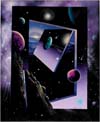
Second Degree training in the advanced energies of Reiki provides First Degree Practitioners with a quantum leap in both the quality and quantity of Reiki energy. With two weekends of training, Second Degree and Practicum, a a wide range of powerful applications for healing across a vast spectrum of situations become available to you, including the ability to offer Reiki powerfully to yourself and others, any where, any when, from a distance.
Over the years it has become obvious that one weekend is not nearly enough time to teach the many advanced Reiki techniques preserved in the lineage. Often Second Degree practitioners do not feel ready to use the advanced Reiki techniques after one weekend, so we have designed a structure that tracks with other traditional lineages but provides additional “face-time” for students to ask questions, understand, integrate, and practice the rich scope of Reiki extensions available through this lineage.
To this end, Second Degree at StoneWind is offered for the traditional fee of $500 (the same amount Takata charged in the 1970’s), but we divide the training into two separate weekends (“Second Degree” and “Practicum”), with the two classes separated by days or weeks, sometimes months at the student’s and teacher’s discretion.
Second Degree followed by Practicum in “combo weekends,” i.e. two weekends in a row, is effective pacing for some, particularly those with medical conditions needing Reiki help sooner rather than later. The two weekends of Second Degree provide students with powerful techniques to use on themselves and others, but each student must decide how much time to space between the two weekends. Weeks or months apart is also appropriate timing.
This two-tier learning approach to Advanced Reiki is
the gateway to other advanced classes at StoneWind and
to training in The Way of the Modern Earth Keeper.
Second Degree
Pre-requisites:
First Degree in the Lineage
Friday-Saturday
9:30 – 4:30
$250
Second Degree Practicum
Pre-requisites:
Second Degree in the Lineage
Friday-Saturday
9:30 – 4:30
$250
Book at our Calendar
For payment options call us at 479-312-1926.
Hospice Reiki allows us to use our Reiki skills to help our loved ones and others transition from life to the afterlife. It takes as much energy to die as it does to be born, but the process of dying is a much more difficult and painful one for the person dying and for friends and family. Those who use Reiki in hospice situations know that a Reiki assisted death is usually peaceful and can even be pain free if Reiki is begun in time to get ahead of the pain curve. And Reiki helps not only the person who is dying, but the family members who are dealing with loss. So if you are facing the death of a loved one, or if you feel called to work with the dying either professionally or as a Reiki Hospice Practitioner, this course is an important part of your Reiki training.
This course includes:
(1) in-depth discussions of ancient and modern understandings of death and dying;
(2) the role of Reiki in supporting both the family and the principal in the transition process;
(3) what to expect with specific steps to follow in hands-on and absentee situations;
(4) ways to help those who are dying with Reiki palliative care; and
(5) steps for assisting a person to transition peacefully into the Light.
The ultimate bonus for you:
those Reiki Practitioners who stand with someone as he/she transitions learn there is nothing to fear in death.
Hospice Reiki
Pre-requisites:
Second Degree in the Lineage
Friday-Saturday
9:30 – 4:00
$200
Book at our Calendar
If someone you love is dying and you have First
but not Second Degree in the lineage,
you can request permission to take the course sooner. Or
you can contact us to find a Reiki Hospice Practitioner able to assist.
479-312-1926
The term “Death Walking” comes from ancient shamanic traditions still in use today in which members
of a tribe with a special calling and extensive training stand ready to protect the living
from the negative influences of the dead and to assist the dead who have become “lost” to find peace.
Assisting our loved ones and others to die peacefully is vitally important; however, it is just one aspect of the death process. What happens after death is an equally important but far less understood issue. For those who are not able to die peacefully with their loved ones beside them, after-body existence can be a complicated situation, particularly for those who die violently or suddenly, those who commit suicide, and for those who die believing there is no afterlife. For those who have died but not moved into the Light, more help is needed. Assisting lost and confused Souls to move on gently after transition from the body is the purview of the Reiki Death Walker.
Death Walking the Reiki Way allows Reiki Practitioners to perform the ancient shamanic role of Death Walker ethically, safely, and gently while protected by the advanced energies of Reiki. This course revisits everything learned in Hospice Reiki about the nature of death and dying, but goes deeper into the nature of life after death, the range of cultural beliefs concerning life after death, additional information on the condition and potential locations of departed souls, the way the dead can and do interact with the living, and the long term consequences for a Soul of not moving on properly. For those who have paradigm questions, you can email us prior to signing up, but be aware that for most–if not all–this will be a paradigm shift moment.
Death Walking
Pre-requisites:
Hospice Reiki in the Lineage
Friday-Saturday
9:30 – 4:00
$200
Book at our
Calendar
Reiki for Veterans
So, Why Should You Learn Reiki?
If you are a warrior...
You have uncommon problems, uncommon strengths.
You need Uncommon Answers.
- You know what hurts, you know where it hurts, you know why it hurts. What you need is a way to fix it without a lot of fuss.
Reiki puts the power in your hands, literally in your hands, to fix yourself–anywhere, anytime. Even the really old wounds can be helped–and it’s not just about physical healing.
- The mental/emotional techniques in advanced Reiki give you new and powerful ways to deal with the images, memories, and feelings from the events you don’t talk about.
- Reiki gives you a powerful way to help your spouse, your children, your loved ones, including your K-9 partner, with gentleness.
- It puts a weapon against pain in your hands that is always there when you need it, always invisible, and always up to specs.
- It is completely compatible with all conventional medical treatments.
- There are scientific explanations if you are willing to go there. Email us if you would like the most recent list of resources.
If you love a warrior...
You have your own pain to carry. It comes with the territory.
You need an effective way to cope with it.
- Fear for their safety;
- Physical loneliness when they are gone;
- Emotional loneliness when they are coping with their stress;
- The long-term effects of occupational stress on everyone you love;
- Exhaustion from too much responsibility carried alone.
- ~~And then there’s the normal pain of life.
Reiki Can Help With All of It
First Degree Reiki gives you a tool to use everyday to heal the wounds, both physical and emotional, and to ease loneliness, stress, and exhaustion. It lets you heal in yourself not only the older wounds of war but the new problems that arise in the now. It gives you an effective tool for controlling the new and ongoing issues like anxiety, depressions, hypertension, and auto immune illnesses. And it opens in you a powerful skill for helping your children as well as your spouse.
Second Degree Reiki is your weapon of choice against the wounds of the past, to meet the challenges of the present, and to craft the future you want. Whether you are the one who has been in harm’s way or your loved one is, the ancient techniques of distance healing allow you to offer help, support, and healing to yourself or to your warrior—wherever s/he is, whenever s/he needs it, whenever you need to be able to send it. And distance healing really does work!
The Good News
& The Bad News
Reiki is an empowerment that gives you new skills,
new control over your life and health.
It works dramatically–and you can use it to help others.
Self-healing isn’t easy or quick.
Everything depends on your willingness to use it on yourself by yourself.
It is easy to begin to doubt–then quit before you have gone the distance.
You learn Reiki in a weekend.
You can use it immediately. You will begin to see results quickly.
Even with early results, the road can be long depending on the goals you set.
Prepare for a long campaign if the problems are old and big.
You have to take charge of your own healing destiny,
but there are lots of comrades and trainers to walk beside you.
Nobody can do your healing for you. Sometimes it is a long, difficult road with detours, switchbacks, and pot holes, which is why healing is not for sissies or quitters.
The more you do it, the more you want it, the more positive results you will see.
It won’t work if you don’t use it. You have to be alert to the ways–and the reasons–you sabotage your efforts to heal.
Reiki is a “complementary” and “integrative” healing modality,
i.e., it can be used with any and all conventional medical treatments.
Doctors may try to discourage you from using it, afraid you won’t seek medical treatment. Reiki is NOT intended to replace medical treatment. Don’t go there. Let your Dr. know you won’t go there.
There is a growing body of documentation on the effectiveness of Reiki
as well as an increasing acceptance of it.
Reiki is now available in over 800 hospitals, including
Mayo Clinic, M.D. Anderson, Sloane Kettering, and Johns Hopkins.
Your family and friends may think you are nuts. You may too from time to time.
But give yourself time to experience the results, to prove it to yourself.
You don’t have to talk about it until and unless you’re ready.
Even really serious conditions can be healed or significantly improved.
To heal the Big Ones, you have to work with
issues you would rather avoid.
It is those times you need friends and mentors
capable of radical honesty.
As your results become more and more obvious,
your confidence and trust in Reiki will grow.
If you use it regularly, in a year, maybe two, you will look back at the road you traveled
with disbelief then knee-bending gratitude.
You will never stop using Reiki once you see where it is taking you,
where you are taking yourself with it.
Those of us who have “been there, done that” know how blessed we have been.
But, you say.....
"This is too far out and weird."
If you have been trained as a warrior, you already have skills others wouldn’t believe,
know things others don’t want to know or accept, maybe wouldn’t approve of,
things you don’t talk about.
This is just one more, and you don’t have to talk about this one either.
"I don't trust that New Age "woo woo."
Reiki actually comes from the ancient healing practices of the East, some of which are preserved in Acupuncture, Qiqong, Shaolin Kung Fu and in kimoodo (healing arts form within the martial arts). Reiki exists outside of martial arts in the West, but in Japan was and is often within those disciplines, where an understanding of qi/chi/ki and the power of the body’s energy is primary. Many of the first Masters trained by Dr. Usui were in the military, including Dr. Chujiro Hayashi, sensei of my lineage, who was a Captain in the Japanese Navy. And my Master, John Harvey Gray, served in combat in the Pacific theater in WW II.
We can’t help how we are labeled or by whom, anymore than you can.
"This is nonsense. People can't do this."
Millions can and do, maybe even some you know who don’t talk about it. If you want to read more about other people doing it,
email me at sparnell@warriorsway.org for a current list of resources.
In the end, the only way you will really know the truth is to try it and see for yourself, even if just a treatment. If it turns out to be a waste of time, it surely isn’t the only time you’ve ever wasted. If it works for you, it could turn out to be the best time you ever spent.
"I don't like some of the crazy things I've seen on Reiki web sites."
There are a lot of things on the web called “reiki” that I wouldn’t want anything to do with either. Unfortunately, the first Western Masters did not trademark the word “reiki” in the early years of Western Reiki. Now it is too late. Anybody can use the word “reiki” to refer to anything they want, and those of us
in traditional lineages are often deeply offended by what winds up being called “reiki.”
To receive training in a form of Reiki that is closest to the energies originally taught in Japan, and therefore unchanged and undiluted by New Age trappings, you have to go to Masters trained in the unbroken lineages of Traditional Reiki. There are fewer of us than of those in “non-traditional” Reiki, and we don’t have a large presence on the web.
So you can know them when you see them, the hallmarks of Reiki Masters in unbroken lineages are:
- They can tell you the names of all the masters in their lineage, i.e., from themselves back to Dr. Usui, the Japanese man who rediscovered Reiki. See SW Lineage for an example.
- They always give four (4) attunements at First Degree.
- They will never teach First and Second Degree in the same weekend, much less mastership.
- They require some waiting period after First Degree before Second Degree, sometimes six months or longer.
- Traditional Masters do not train someone else’s students in Second Degree or mastership; all training is done by the same Master.
- Mastership is by invitation after two to five years as a practitioner.
- To become a Reiki Master requires rigorous training that often takes a year or longer–and there is a significant fee that can be paid in a variety of ways.
Suzanne Parnell Ph.d., R.M.
Founder of Warrior’s Way Foundation,
Reiki Master in the direct
Lineage of John Harvey Gray.
(Usui – Hayashi – Takata – Gray)
Going Deeper
“Reiki (ray-key)” is a general term for a range of practices now taught throughout the world under a variety of names and methods representing an easy to learn, simple to use method of energy healing that can be used on one’s self as well as others.
The original form of Reiki emerged in Japan in 1922 as the result of a profound energetic experience that happened to Dr. Mikao Usui, a Japanese Buddhist, during a 21-day Zazen retreat on Mt. Kurama-yama, just outside of Kyoto. Dr. Usui’s experience, known in Japanese Buddhism as satori, a term broadly defined as “awakening” or “enlightenment,” produced life altering effects that remained with him in the years afterward, including new healing abilities and a pervasive desire to help people.
Dr. Usui called the healing method that evolved out of his spiritual experience Usui Shiki Ryoho, or the “Usui System of Natural Healing.” Before his death in 1926, Dr. Usui had taught Reiki healing to over a thousand people and had established methods among his students for the continued transmission of Reiki into the future.
The Reiki system Dr. Usui developed and handed forward is an evolutionary advance over all other energy healing modalities both ancient and modern. Reiki is unique because it is based on a new method of transmitting energetic abilities from teacher to student that Dr. Usui called “reiju” meaning “attunement” or “initiation”. The Reiki Reiju is a method of energetic activation that opens instant access to Reiki abilities in the hands of ordinary people. The reijus or energy activations are the reason anyone can “learn” Reiki in a weekend.
The ability to make Reiki energy available to ourselves and others, therefore, is not a learned “skill” acquired through long study, practice, or even through some natural “gift.” Rather Reiki ability is a personal empowerment or “energetic activation” that is opened quickly in the hands of everyday normal people by a Reiki Master trained in the subtle energy technology of the Reiki attunements. All that is necessary for a student to have and use Reiki is the willingness to receive the attunements.
 Learning Reiki is a gift you give yourself, an empowerment you choose that enables you to help yourself heal old issues and deal with new health issues as they arise, and it is an ability that lets you help others effectively as they are willing.
Learning Reiki is a gift you give yourself, an empowerment you choose that enables you to help yourself heal old issues and deal with new health issues as they arise, and it is an ability that lets you help others effectively as they are willing.
People of all ages, all religions, all belief systems, even die-hard skeptics and those with no beliefs at all have benefited from Reiki treatments, have become Reiki practitioners. Reiki, as Dr. Usui received it and as Mrs. Takata passed it to the western world, is uniquely suited to modern—to western—sensibilities: it is deeply spiritual yet outside of all religions. It is easy to learn, simple to use, and effective. It is the system of natural healing for the twenty-first century and beyond.

As explained above, the original form of Reiki, called the “Usui Method of Natural Healing” (Usui Shiki Ryoho), originated in Japan between 1922 and 1926. It was introduced to the West in 1936 by Ms. Hawayo Takata.
Hawayo Takata was a Japanese Hawaiian who was healed through Reiki of a serious medical condition while living in Japan. She was the first westerner allowed to learn Reiki. In 1938 she became the only person empowered by her Japanese Sensei (teacher), Dr. Chujiro Hayashi, to pass Reiki forward in the west. From 1938 until her death in 1980, Ms. Takata taught hundreds of students and made 22 Masters, who at the time of her death then became the only ones empowered to continue to teach Reiki in the west.
After Ms. Takata’s death in 1980, with western ignorance of the concept of integrity in oriental traditions of lineage, i.e. the lineal descent of knowledge from master to student, “reiki” as a healing practice began to be changed by many people wishing to brand Reiki for marketing and presentation. The wide range of changes in methods of transmission were driven by the rising interest in oriental practices after WWII, and the expanding acceptance of alternative medicine after the 1980’s. Takata and those she taught had not thought to trademark the word “reiki,” which would have been the only way to protect the integrity of the name and the teachings. By 1995 when attempts were made to protect lineage knowledge with a trademark, the effort was opposed in court and the term “reiki” was ruled to be in the public domain, and therefore unable to be trademarked.
As a result, reiki branched into two general forms of transmission: traditional Reiki and non-traditional Reiki. The Reiki opened in students by those teachers who learned, honored, and passed forward Takata’s methods of transmission virtually unchanged is referred to as “Traditional Reiki,” while the Reiki taught by those using altered methods of Reiki transmission, applications, and techniques, are termed “non-traditional” Reiki.
Traditional Reiki continues to be taught by those who adhere closely to Takata’s methods of transmission and training, while Non-traditional Reiki refers to the Reiki offered in a variety of formats under a wide range of labels, with each form representing significant changes to the methods of use and transmission. In the years since 1980, so many differing variations of reiki have been put forward that without considerable understanding of the role of lineage in energetic transmission, it is difficult for the individual to distinguish between the sometimes contradictory forms of reiki that are advertised.
Traditional Reiki Lineage
at StoneWind Institute
through
Suzanne E. Parnell, PhD, RM
Usui Shiki Ryoho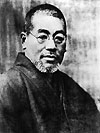 Dr. Mikao Usui
Dr. Mikao Usui
O Sensei
|
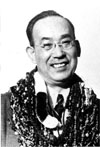 Dr. Chujiro Hayashi
Dr. Chujiro Hayashi
|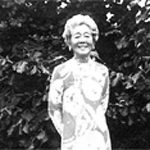 Mrs. Hawayo Takata
Mrs. Hawayo Takata
|
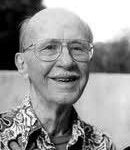 John Harvey Gray
John Harvey Gray
(& Beth Gray)
|
Suzanne E. Parnell
Levels I, II, Mastership
 Traditional Reiki at StoneWind adheres strictly to the form of the attunements that Ms. Takata learned from her Sensei, Dr. Chujiro Hayashi, and in turn handed forwarded to her Masters. It is understood in the traditional lineages that if we change the attunement process, we alter the energetic science that makes the full range of Reiki abilities available in students. To maintain the full power of original Reiki, Traditional Reiki Masters preserve the form and structure of the attunement transmission methods so as to assure that the full range of Reiki energies open in all students.
Traditional Reiki at StoneWind adheres strictly to the form of the attunements that Ms. Takata learned from her Sensei, Dr. Chujiro Hayashi, and in turn handed forwarded to her Masters. It is understood in the traditional lineages that if we change the attunement process, we alter the energetic science that makes the full range of Reiki abilities available in students. To maintain the full power of original Reiki, Traditional Reiki Masters preserve the form and structure of the attunement transmission methods so as to assure that the full range of Reiki energies open in all students.
Traditional Reiki at StoneWind is taught in three “degrees” or levels of training: First Degree, Second Degree, and Mastership (sometimes called Third Degree). Each level of training is offered within the guidelines for Traditional Reiki.
In traditional western lineages, i.e., in those lineages whose energetic methods descend in unchanged format from Hawayo Takata, First and Second Degree are taught in multiple weekends of training separated by periods of practice time, usually one to six months. Students with serious medical conditions whose situation requires access to the advanced energies and techniques of Second Degree training more quickly than the usual timing–or those who feel energetically ready for Second Degree sooner–may request to have the waiting periods between levels of training shortened.
In the Traditional Lineages, First and Second Degree are never taught in the same weekend. In the Parnell lineage, where advanced techniques and extended applications in the advanced energies come down from two Masters trained by Takata (Beth Gray and John Harvey Gray), Second Degree training involves an additional weekend known as “Practicum” to assure students understand and are fully trained in the additional advanced applications that allow powerful use of Reiki in a wide range of situations. If a student is confronting serious medical issues, he/she can ask to take Second Degree and Practicum without the longer waiting period.
Completion of Second Degree is considered a professional level of training for the purposes of being a “Practitioner,” i.e., for those who wish to provide Reiki sessions to others or who wish to incorporate Reiki into an existing therapeutic practice.
Mastership in traditional lineages is reserved for those who feel called to teach Reiki to others, with several prerequisites, including a lengthy period between Second Degree and acceptance for Mastership training, then an extended period of instruction from the teaching Master. Mastership is by invitation and the training extends from one year to as long as five years, depending on circumstances of time and place.
What is Reiki
Reiki (ray-key) is an easy to learn, simple to use method of natural hands-on energy healing that promotes health and well being in both practitioners and recipients. The word Reiki in its English form is both a noun and a verb. As noun, Reiki is the name of the ancient healing energies discovered in the early 1920’s in Japan by Dr. Mikao Usui. It is also the name of the Method of Natural Healing developed around those energies and practiced by millions of people all over the world. Through the energetic science of “attunements” preserved by teachers trained in the lineages of Reiki, anyone and everyone who chooses to can become a conduit for Reiki healing energy through a simple training process.
Do Reiki Practitioners heal anyone?
No… Only you can heal you. The Reiki Practitioner is simply a “conduit,” an intermediary through whom the Universal Life Energy is made available to your body. The wisdom of your body takes from the quantum energies of Reiki what your body needs and only what it needs, thus replenishing the energy your body requires for its healing. The Reiki Practitioner has no power to direct–or predict–the interaction between your body and the Reiki.
Is Reiki different from other energy healing methods?
Yes. in two significant ways:
(1) Since Reiki Practitioners are simply conduits for the Universal Life Energy, they are not drained during transmission; in fact, Reiki energizes the giver as well as the receiver. In addition, there is never an exchange of any disease process between receiver and giver.
(2) Reiki is not learned through years of practice and study as is necessary with other forms of energy healing; rather, it is an empowerment acquired directly from a properly trained Reiki Master through an ancient energy “technology” known as an attunement.
What is a Reiki treatment?
During a typical Reiki session, the client relaxes fully clothed on a massage table while the Reiki Practitioner gently places hands over specific areas, holding the hands stationary while the needs of the client’s body at that position draws Reiki strongly into the client. When the energy pull subsides, the Reiki Practitioner moves to the next position. Reiki treatments can take anywhere from a half hour to two hours, or more, and usually leave both Client and Practitioner feeling relaxed yet energized
Can Reiki affect medical treatment?
Yes. While Reiki is meant to augment necessary medical or psychotherapeutic treatments, not replace them, it greatly increases the benefits of any therapy by speeding up recovery time, supporting the body’s efforts to heal, and providing help in the management of pain and discomfort. With Reiki, the dosage of many medications can be lowered, and Reiki can be particularly useful in trauma situations during the first “Golden Hour” or before medical help arrives.
Will Reiki help a person who is dying?
Absolutely. Reiki helps ease the discomfort and pain of the dying process and provides relief from the fear, loneliness, and anger which often accompanies the process of transition. And Reiki is beneficial for family members dealing with the stress, grief, and anger associated with the final illness and death of a loved one. “Reiki deaths” are beautiful passings. Using Reiki to assist the dying is a privilege for the practitioner. Reiki Hospice work is a tradition at StoneWind Institute, and training in Hospice Reiki is available to any Reiki student in the lineage who is interested.
Is Reiki foreign?
Yes and No. Like Transcendental Meditation, T’ai Chi, Shiatsu, Chi Kung, and Acupuncture, Reiki comes to us from the Orient. In fact, Dr. Mikao Usui, who rediscovered the ancient Tibetan method of healing in the early 1900’s, was Japanese.
However, the energies of Reiki are universal. They are the energies of the universe, of nature, and of our own bodies. Anyone who has ever received a Reiki treatment knows there is nothing “foreign” about Reiki. It is a completely natural method of healing.
Is Reiki a religion?
Traditional Reiki, as it comes from Japan and is practiced by Traditional Reiki Masters is not a religion. It has no arcane dogma, no tenets of faith, no church. It requires no rigorous ascetic practices or rituals and is in no way contrary to a person’s belief system. People of all religious beliefs and those with no beliefs in all parts of the world practice Traditional Reiki.
Many report that the experience of Reiki deepens whatever religious beliefs they already hold. If someone presents Reiki as part of a religion or a particular set of religious beliefs, they have chosen to add things into Reiki that is not part of Traditional Reiki and that represents unfortunate changes.
Must I believe in Reiki for it to work?
No. Existence is not dependent upon belief.
You do not have to believe honey is sweet to enjoy its taste–you just have to eat it. Many who did not believe in Reiki have been helped by it–and surprised at the effects. What is necessary is a desire to heal. Reiki is about the strength of each Recipient’s willingness and desire to heal.
How is Reiki Taught?
Traditional Reiki courses are divided into First Degree and Second Degree Reiki, each level taught in regularly scheduled classes. At the conclusion of each level, the student receives a certificate indicating the level of training completed.
First Degree Reiki: includes an introduction to the history of healing energies, the history of Reiki, information on the human energy field, the four attunements necessary to create the permanent energy connection that enables the student to act as a conduit for Reiki energy, and to practice giving and receiving Reiki. The four attunement process is the hallmark of unbroken Traditional lineage.
Second Degree Reiki: includes the two attunements necessary to open complete Reiki energy in the practitioner’s hands, plus training in advanced techniques for using the full range of Reiki frequencies. Those technologies include distance healing, methods of mental and emotional healing both at a distance and hands-on, and ways to use Reiki for the planet. Two attunements at Level II is the hallmark of unbroken Traditional lineage.
Reiki Mastership, Level III, is by invitation from the Teaching Master after the practitioner has had Reiki in the lineage for a minimum of three years. Mastership training requires a deep commitment to Reiki teaching and healing, and usually takes from twelve to eighteen months or longer. Reiki Mastership at StoneWind Institute follows the standards and commitments published by the Alliance of Reiki Masters.
Why Do Reiki Masters Charge for Reiki?
Reiki healing is about more than “fixing the body.” It is about healing the physical, emotional, mental, and spiritual causes of illness and distress. For such healing to be fully effective there must be cooperation and commitment on the part of the client. Under the ethics established by Dr. Usui, the founder of the Reiki Method of Natural Healing, those receiving Reiki training or treatment must exchange some form of energy as a sign of commitment and involvement in their own healing.
Money is a compressed form of energy, and the most common form of exchange, although by no means the only one. Most Reiki Masters operate on a fee schedule, yet reserve the option to modify fees or to accept other forms of energy exchange for Reiki. That energy exchange, whether money or otherwise, is critical to all parties because it maintains a balance between the people involved. From an energetic perspective, the energy exchange between practitioner and receiver, between Master and student, establishes the receiver’s firm intent to maintain outward balance and opens the body to the inward balance from which physical healing comes.
From a psychological point of view, a suitable energy exchange means neither party is able to feel “one up” or “one down,” neither needs to feel indebted to the other–or used. Both are able to walk in respect for the other.